A Look Back at 2019
It’s been a busy 12 months at the Ohio Supreme Court. New justices stepped onto the bench, and former justices reminisced. More legal help became available to those in need. And public education about the courts was at the heart of numerous activities.
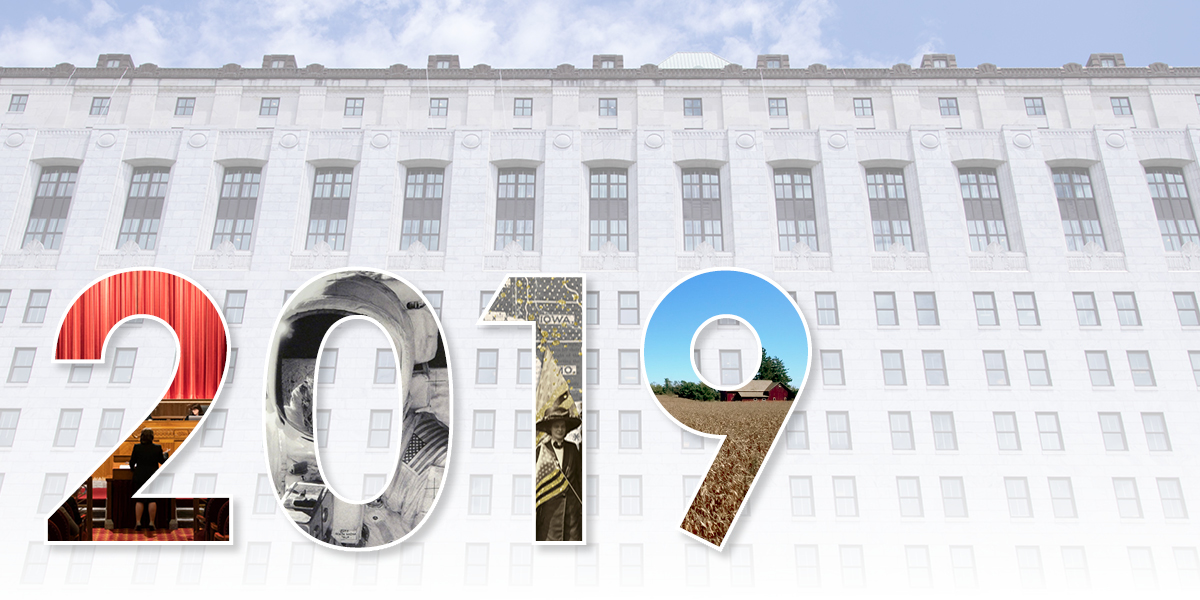
Also in 2019: A documentary produced by the Supreme Court gave a revealing look inside the state’s drug courts, and an interactive, public resource brimming with statewide court data debuted. As the year comes to a close, here’s an assortment of the many highlights.
Court Welcomes New Justices, Key Hires
Two new justices, elected in November 2018, joined the Ohio Supreme Court in January of this year. Justice Michael P. Donnelly, the 160th justice on the Supreme Court, served the Cuyahoga County Common Pleas Court for 14 years. Justice Donnelly said he wanted to work on broader issues in the justice system and is enjoying the move from trial court to the state’s premier bench. (Justice Donnelly Relishing Jump from Trial Court to Supreme Court)
Justice Melody J. Stewart’s election marked a Supreme Court milestone: She is the first African-American woman elected to the state’s highest court and only the second to serve on the high bench. Justice Stewart, Ohio’s 161st justice, served on the Eighth District Court of Appeals from 2006 to 2018. The 12th woman to sit on the Court, her election also kept the Court’s female majority from the previous term. With more than 30 years of combined administrative, legal, and academic experience, Justice Stewart, who describes herself as a lifelong student, said she approaches each case with curiosity. (Justice Stewart Starts Tenure as First African-American Woman Elected to Supreme Court)
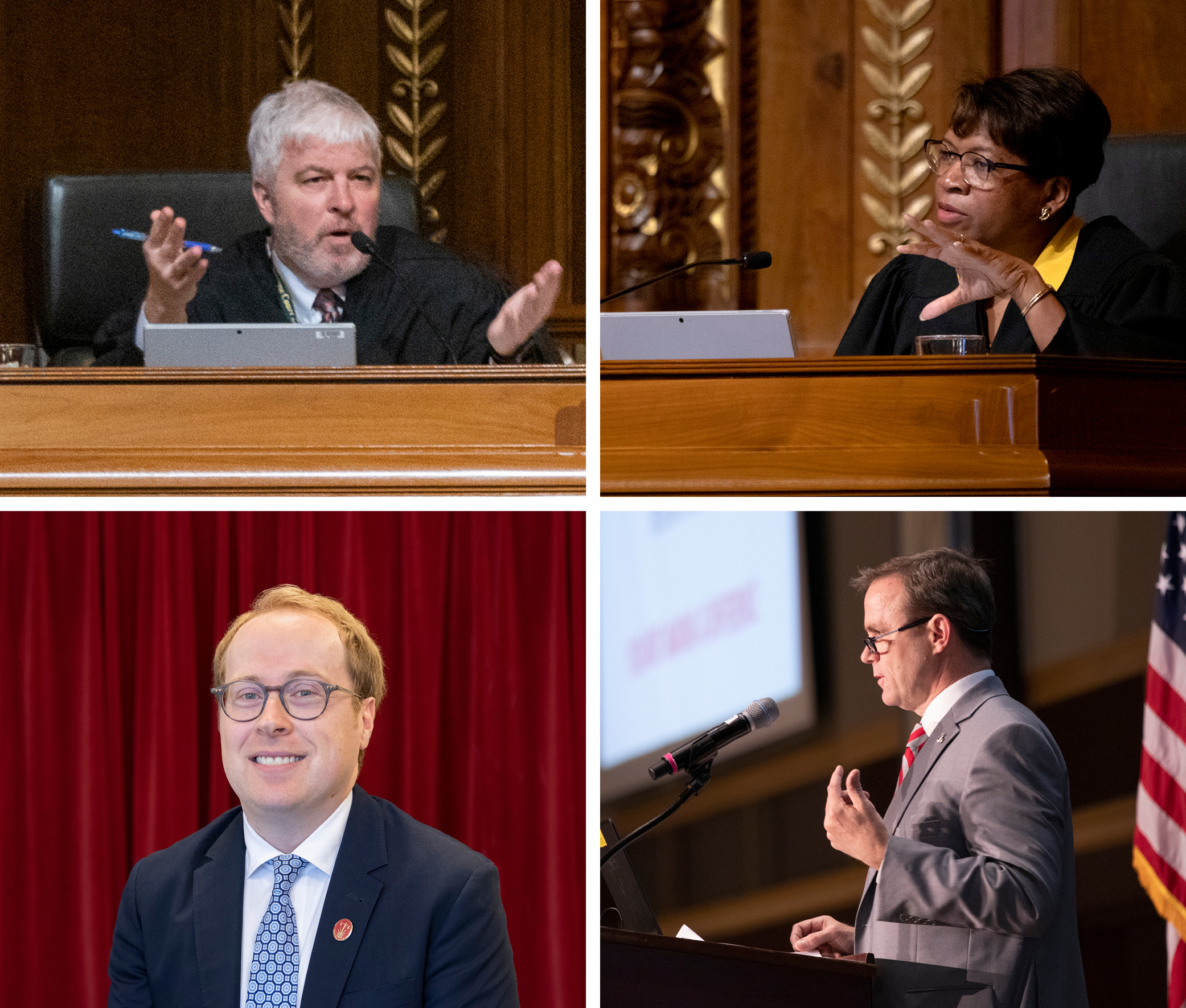
Justices Michael Donnelly and Melody Stewart began their first terms on the Supreme Court this year. Also taking on important roles at the Court in 2019 were new administrative director Jeffrey Hagler (pictured, lower right) and Douglas Nelson, reporter of decisions (lower left).
In April, retired U.S. Army Colonel Jeffrey C. Hagler was named the Court’s administrative director, a position required by the Ohio Constitution. Hagler, who began the job in July, originally hails from Ohio’s own Greene County. He most recently served as a judge with the U.S. Army Court of Criminal Appeals, which conducts appellate reviews of Army court-martial convictions. He also was the primary legal adviser to the commander of the 18th Airborne Corps and to Fort Bragg, North Carolina, the most populous military installation in the United States. He deployed from 2015 to 2016 as the primary legal adviser for Operation Inherent Resolve, the 70-nation counter-ISIS campaign in Iraq, Syria, and Kuwait. (Leadership and Legal Lineage: Court Administrative Director’s Perfect Pairing)
The Court filled another critical staff position in July – the reporter of decisions. The justices chose Douglas M. Nelson, who had worked as an assistant reporter with the Court since 2015, to lead the Office of the Reporter. The office edits, reports, and oversees the print publication of the Supreme Court’s opinions, rulings on motions, miscellaneous orders, and rule amendments. The Reporter’s Office also publishes Supreme Court opinions, along with decisions from the state’s appellate courts and Ohio Court of Claims, on the Court’s website. In addition, Nelson manages the process for reporting the justices’ votes in individual cases. (Supreme Court Hires Reporter of Decisions)
Film Follows Individuals through Ohio Drug Courts
While a federal court in Cleveland considered lawsuits from across the country about the lives lost in the opioid crisis, a one-hour, Court-produced documentary released in May presented a gripping, up-close view of 19 Ohioans struggling with drug addiction. As they participate in specialized programs established by courts in Medina, Marion, and Hocking counties, the individuals are seen combatting their substance use and other obstacles, and celebrating their successes.
The film – “Second Chances: One Year in Ohio’s Drug Courts” – reflects the crucial role courts are playing in the complicated recovery process for drug users, their families, and their communities.
“Most Americans are familiar with the tragic data generated by our nation’s drug epidemic. But this film takes a very deep look into the human side of drug use, by the users and from the bench,” Chief Justice Maureen O’Connor said.
Free, public screenings took place in August in Marion County and in Medina County. A screening in southeast Ohio is expected in early 2020.
Supreme Court Decisions Address Searches, Secret Ballots, Forgery, and More
The Court’s main role is to review and rule on important legal issues in the state. Here’s a roundup of several of its significant case opinions from this year:
Search of Man Walking Near Where Gunshots Heard Was Constitutional
Court Must Reconsider Guilty Plea Withdrawal by Immigrant Facing Deportation
Electric Grid Modernization Charge Improperly Imposed
Law Limits Time to File Breach-of-Contract Lawsuits for Faulty Construction
Public Bodies Cannot Use Secret Ballots to Take Official Action
Judge Cannot Impose Community Controls to be Served After Prison Sentence
Grocer Not Responsible for Motorized Cart Collision that Injured Shopper
Court Upholds Statute Eliminating Residency Quotas in Cleveland’s Public Construction Contracts
Cincinnati Must Pay Newspaper’s Legal Bill for Withholding Arrest Videos
Double Jeopardy Protections Do Not Bar Prosecuting Man Who Changed Story about Son’s Death
Township Cannot Be Sued based on Hiring and Supervision of Officer Who Injured Motorist
Banks Entitled to Restitution for Forged Checks
Dog's History of Biting Can Be Used to Convict Owner of Crime
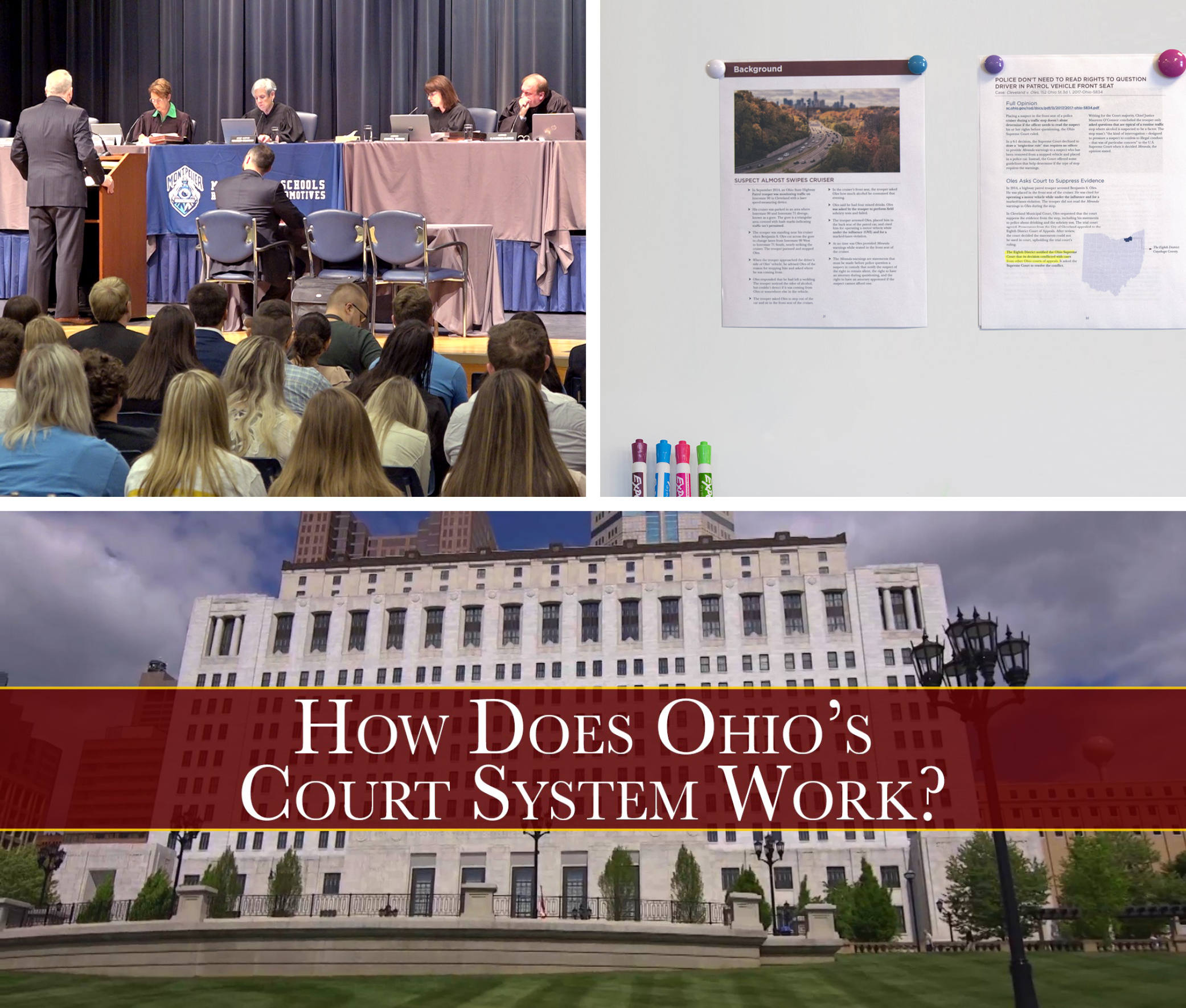
The Supreme Court held events for the public and developed educational materials to build greater understanding of the courts, including a course tailored to high school students called “Under Advisement.”
As part of its commitment to fostering the public’s understanding of the state justice system, the Court launched a multi-faceted course for high school students this year called “Under Advisement: Ohio Supreme Court Cases on Demand.” The curriculum, designed for three or four class days, follows real and relatable cases through Ohio’s courts. State courts nationwide handle nearly all – 96 percent – of U.S. court proceedings.
Tailored to the state’s high-school learning standards, the detailed and visually compelling materials include:
- each case’s background
- key moments in the trial and appellate courts
- arguments made in each side’s briefs to the Court
- video of oral argument before the Court
- article summarizing the Court’s decision in each case.
A special teacher packet includes a lesson plan with a timeline, discussion topics, and homework, as well as an annotated guide to the oral argument video. Teachers shared their professional insights about the course in “Out of the Courtroom, Into the Classroom.” “Under Advisement” is the work of the Court’s Civic Education Section and the Office of Public Information.
In other 2019 outreach efforts, the civic education staff unveiled a video titled “How Does Ohio's Court System Work?” The lively, entertaining take on the judicial branch explains the differences between the various types of courts in the state and importance of the justice system and the rule of law.
Also this year, approximately 1,000 high school students had the opportunity to see the Court in action in their counties. The Court held oral arguments in Ashtabula County in April and Williams County in October. At other public, educational events, the Court welcomed the CEO of the Center of Science and Industry and more than 100 students in February to honor Black History Month and an Ohio State University professor in October for a Forum on the Law about an 18th century Italian philosopher who influenced the U.S. justice system.
Former Justices Go On the Record in Video Series
“Reflections from the Bench,” a collection of in-depth interviews with former Ohio Supreme Court justices, continued this year with four more episodes. Justice Patrick F. Fischer, who had the inspiration for the program and hosts it, spoke with former Justices Yvette McGee Brown, Herb Brown, Evelyn Lundberg Stratton, and Andy Douglas.
Public, Online Tracking Tool Crunches Data about Courts
The Court debuted an interactive, real-time dashboard in February for researching the state’s case statistics. The data – submitted at regular intervals by Ohio’s trial courts (common pleas general, domestic relations, probate, and juvenile courts, as well as county and municipal courts) – can be broken down by several criteria, such as year, county, judge, and case type.
The dashboard was created to assist the public, media, and courts in accessing and using case statistics. It’s intended as a resource to increase court transparency and accessibility for the media and the public and to provide local courts with a new way to monitor and improve case management processes. The dashboard homepage offers instructional videos.
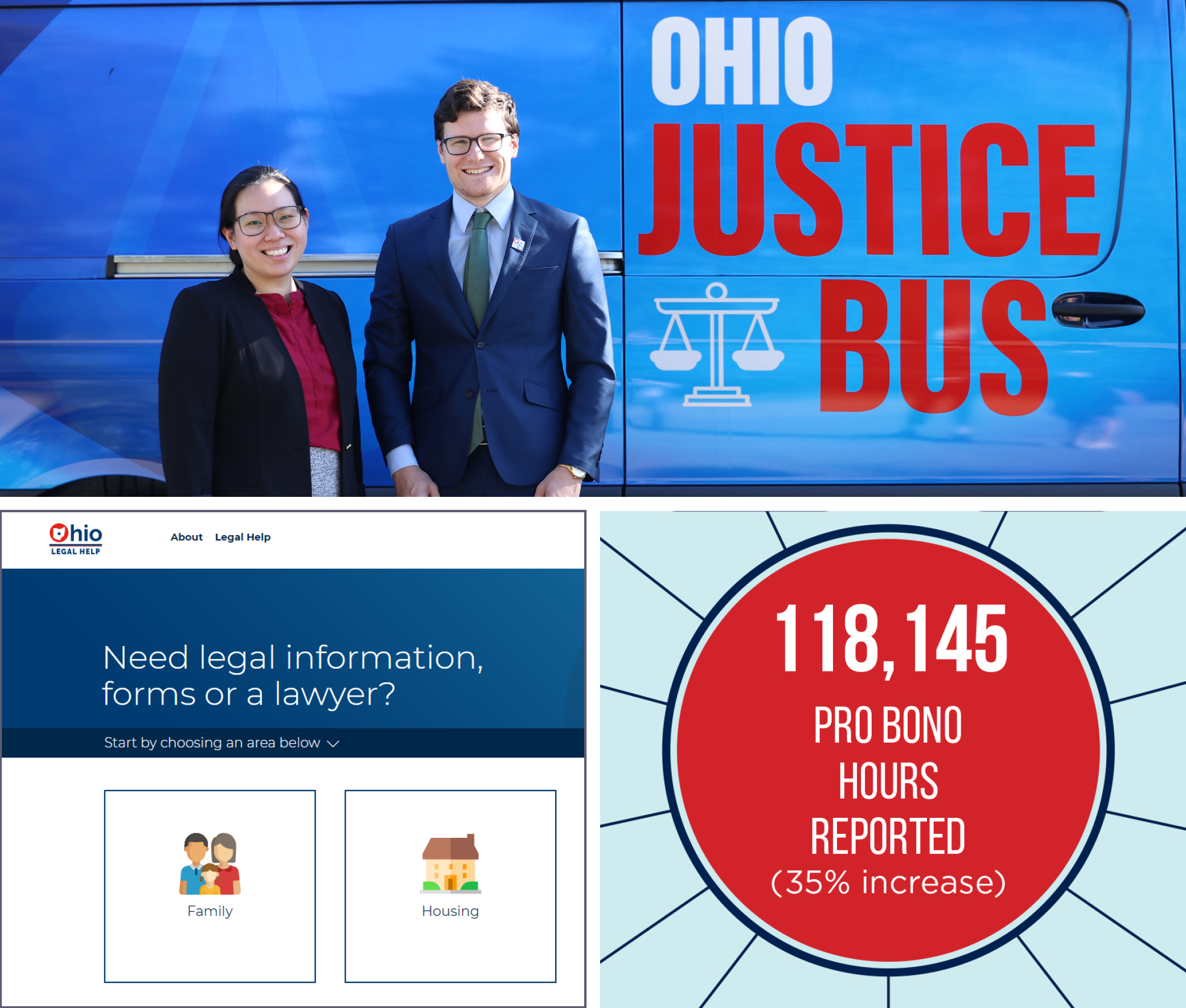
The Ohio legal community took several steps this year to offer more legal assistance to those in need.
The public now can turn to a powerful, plain-language website for free information about common legal problems. Ohio Legal Help, which went live in August, takes visitors through a simple, step-by-step guide that directs them to helpful and appropriate resources and identifies next steps. The site, developed by the Ohio Access to Justice Foundation (formerly the Ohio Legal Assistance Foundation) and several partners, also offers legal forms, attorney referrals, and court details. The Ohio Supreme Court sponsors the foundation.
“The Supreme Court’s Task Force on Access to Justice recommended that Ohio develop a statewide website that provides free and accurate legal information and standardized forms,” Chief Justice O’Connor said. “Ohio Legal Help is that website and will increase access to justice for all Ohioans.”
As data indicates that a greater number of Ohio attorneys are giving free legal assistance to low-income individuals and donating more of their time to do so, attorneys across the state talked about the people they help pro bono in “Giving Back.” These attorneys help to balance the scales by tackling basic, yet essential, needs both during tragedies, such as the May tornadoes in Dayton, and other life crises. Also expanding access to justice this year is the Ohio Justice Bus, spearheaded by the foundation, which travels the state delivering pro bono legal guidance directly to people in underserved areas.
Honoring Ohio and U.S. History, with Legal Twists
The state and the country began a yearlong celebration this summer of the 100th anniversary of women securing the right to vote through the U.S. Constitution’s 19th Amendment. In “A More Perfect Union,” women on the Ohio bench, including the Court’s four female justices, shared their personal stories about the first time they cast a ballot, why they vote, and what it was like to win an election.
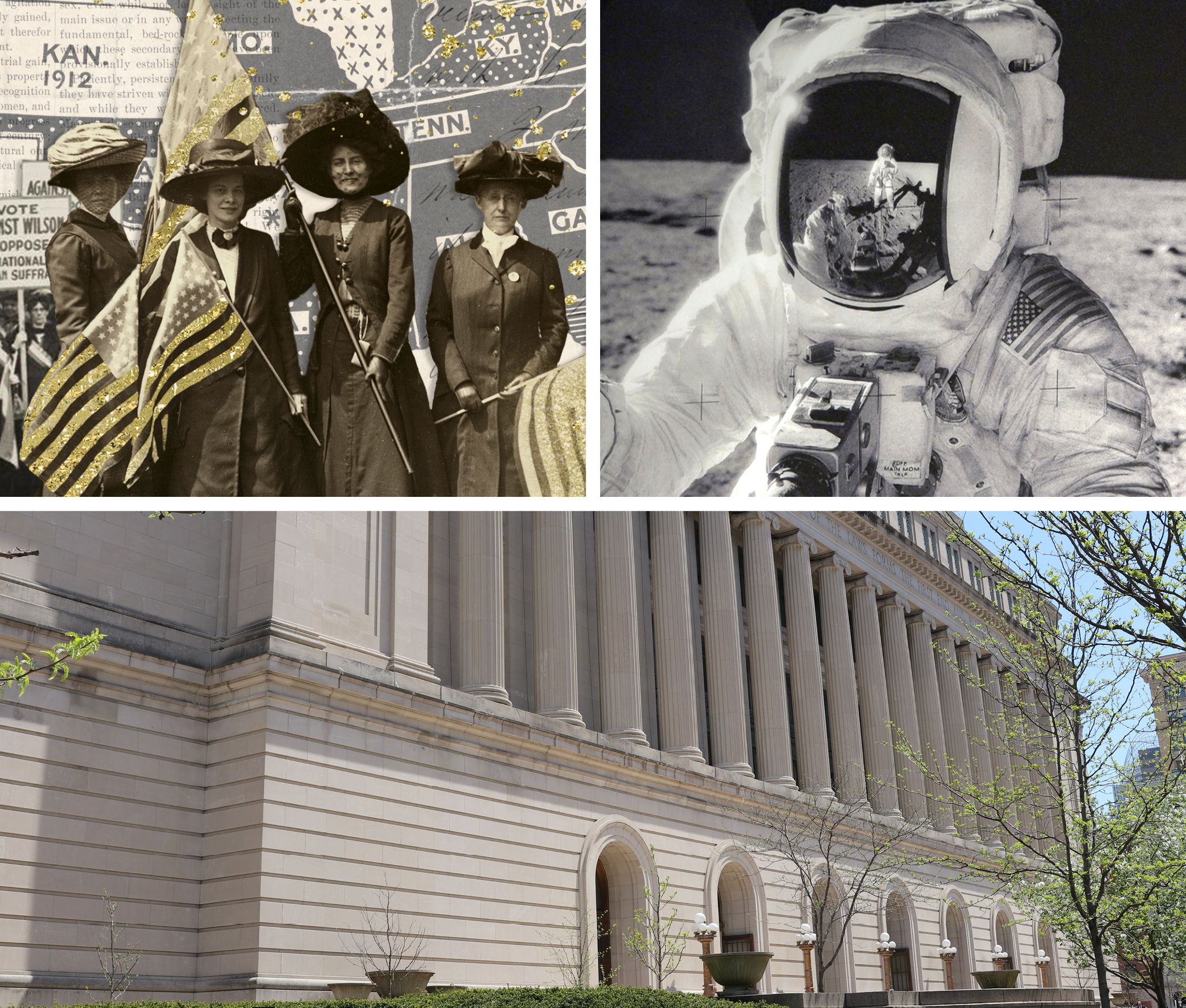
In 2019, the Supreme Court joined in celebrating anniversaries of pivotal moments in history.
Also recognized nationally and statewide was that small step Ohio astronaut Neil Armstrong took 50 years ago into the vast universe. “How Neil Armstrong Leaned on Law after Historic Moonwalk” looks at Armstrong’s legal battles over the years to preserve the integrity of his image, quotes, and name.
In another centennial celebration, state officials rededicated the Hamilton County Courthouse in Cincinnati. The storied history of the site’s fifth courthouse and highlights from the October event, which was attended by two Supreme Court justices, are featured in “Hamilton County Courthouse 100 Years Old and Counting.”
Task Forces Release Reports
Two task forces convened by Chief Justice O’Connor issued reports this year.
The 25-page July report from the Task Force to Examine the Ohio Bail System included nine recommendations to the Supreme Court. The task force examined the current criminal rule on bail, compared Ohio’s bail and pretrial systems with those in other states, and analyzed state and federal litigation regarding cash bail.
In September, the Task Force on the Ohio Disciplinary System published a 117-page final report. Charged with examining the state’s system for disciplining judges and attorneys, the task force compiled recommendations for the Court aimed at strengthening public trust and confidence in the disciplinary system.
CREDITS:
Design: Ely Margolis
Web: Erika Lemke
Video Stories/Editing: Anne Fife, Csaba Sukosd, Anne Yeager
